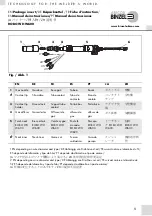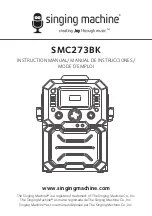
MIG WELDING TROUBLESHOOTING
The general approach to fix Gas Metal Arc Welding (GMAW) problems is to
start at the wire spool then work through to the MIG torch. There are two main
areas where problems occur with GMAW, Porosity and Inconsistent wire feed.
When there is a gas problem the result is usually porosity within the weld metal.
Porosity always stems from some contaminant within the molten weld pool
which is in the process of escaping during solidification of the molten metal.
Contaminants range from no gas around the welding arc to dirt on the work
piece surface. Porosity can be reduced by checking the following points.
Troubleshooting - Porosity
Fault
Cause
Shielding gas cylinder contents and flow meter.
Ensure that the shielding gas cylinder is not empty and the flow meter is correctly adjusted to
15 litres per minute.
Gas leaks.
Check for gas leaks between the regulator/cylinder connection and in the gas hose to the Power
Source.
Internal gas hose in the Power Source.
Ensure the hose from the solenoid valve to the torch adaptor has not fractured and that it is
connected to the torch adaptor.
Welding in a windy environment.
Shield the weld area from the wind or increase the gas flow.
Welding dirty, oily, painted, oxidised or greasy plate.
Clean contaminates off the work piece.
Distance between the MIG torch nozzle and the work piece.
Keep the distance between the MIG torch nozzle and the work piece to a minimum.
Maintain the MIG torch in good working order.
Ensure that the gas holes are not blocked and gas is exiting out of the torch nozzle.
Do not restrict gas flow by allowing spatter to build up inside the torch nozzle.
Check that the MIG torch O-rings are not damaged.
WARNING! Disengage the feed roll when testing for gas flow by ear.
Wire feeding problems can be reduced by checking the following points.
AW)
Troubleshooting - Wire Feed
Fault
Cause
Feed roller driven by motor in the cabinet slipping.
Wire spool brake is too tight.
Wire spool unwound and tangled.
Wire spool brake is too loose.
Worn or incorrect feed roller size
Use a feed roller matched to the size you are welding.
Replace feed roller if worn.
Wire rubbed against the misaligned guides affecting the
wire feed.
Misalignment of inlet/outlet guides.
Liner blocked with swarf.
Increased amounts of swarf are produced by the wire passing through the feed roller when
excessive pressure is applied to the pressure roller adjuster.
Swarf can also be produced by the wire passing through an incorrect feed roller groove shape
or size.
Swarf is fed into the conduit liner where it accumulates thus reducing wire feed.
Incorrect or worn contact tip.
The contact tip transfers the weld current to the electrode wire. If the hole in the contact tip is too
large then arcing may occur inside the contact tip resulting in the wire jamming in the contact tip.
When using soft wire such as aluminium it may become jammed in the contact tip due to
expansion of the wire when heated. A contact tip designed for soft wires should be used.
Poor work lead contact to work piece.
If the work lead has a poor electrical contact to the work piece then the connection point will
heat up and result in a reduction of power at the arc.
Bent liner.
This will cause friction between the wire and the liner thus reducing wire feed.
ZZZVWUDWDFRQ]










































